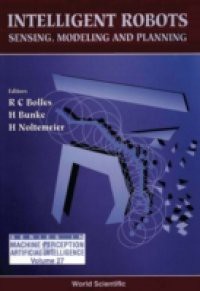Rapid advances in sensors, computers, and algorithms continue to fuel dramatic improvements in intelligent robots. In addition, robot vehicles are starting to appear in a number of applications. For example, they have been installed in public settings to perform such tasks as delivering items in hospitals and cleaning floors in supermarkets; recently, two small robot vehicles were launched to explore Mars.This book presents the latest advances in the principal fields that contribute to robotics. It contains contributions written by leading experts addressing topics such as Path and Motion Planning, Navigation and Sensing, Vision and Object Recognition, Environment Modeling, and others.Contents:Path and Motion PlanningNavigation and SensingLocalization and VisibilityVision, Shape, and Object RecognitionEnvironment ModelingFixture Design and GraspingDistributed SystemsEcological Systems, Learning, and Robot ControlApplicationsReadership: Researchers and scientists in intelligent robotics.Key Features:New theoretical and experimental developments in photo-injectors: diamond layers for secondary electron generation, electron pulse self-shaping for the generation of sub-picosecond electron pulses, superconducting RF gunsGeneration of high brightness electron beams from laser-plasma sources: status, development programs and future possibilitiesLongitudinal compression of high brightness electron beams: chicanes, inverse free-electron lasers, velocity bunchingDiagnostics for high brightness, high peak current beams: approaching the femtosecond frontier. Coherent radiation-based measurements, and ultra-fast time-domain measurements (e.g. RF sweepers)Applications: Free-electron lasers, ERLs, inverse Compton scattering sources; linear colliders and related HEP; advanced accelerators (wakefield accelerators, laser accelerators)




 9.32 (68)
9.32 (68) 













